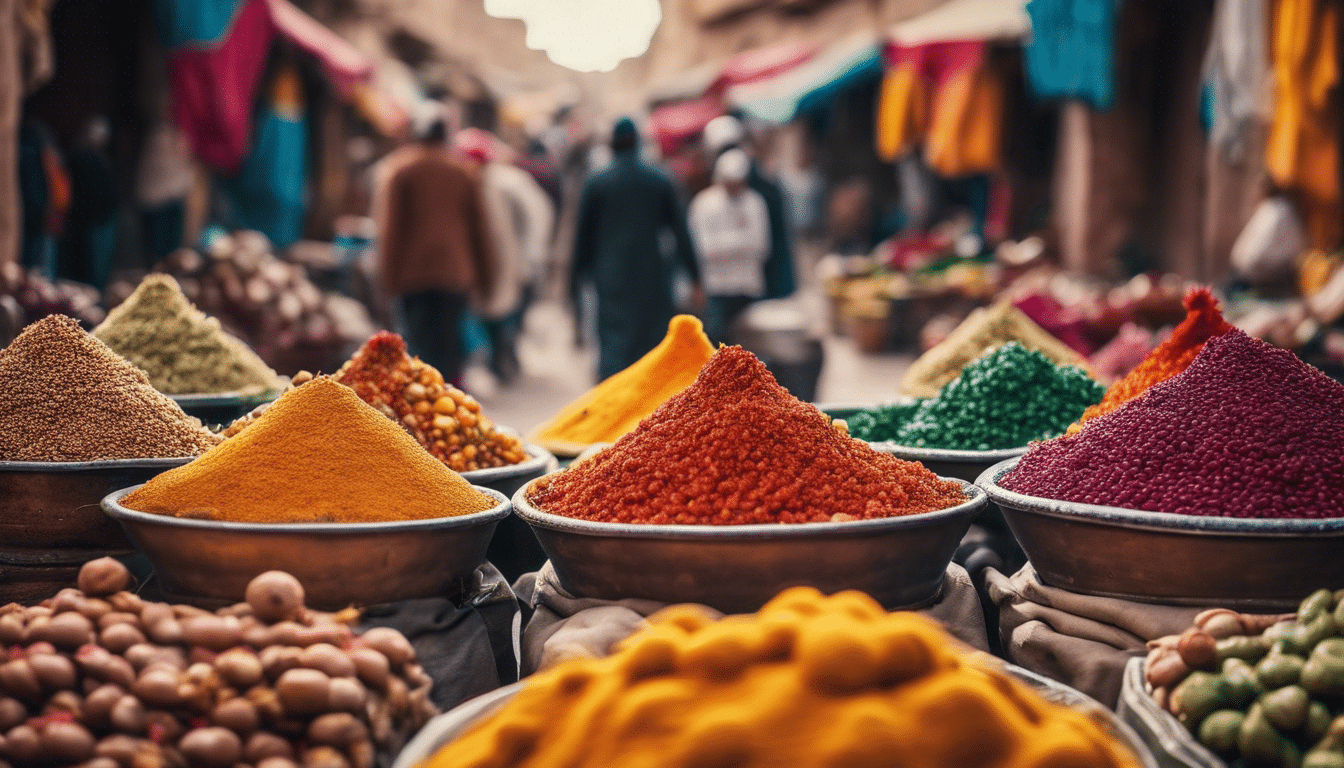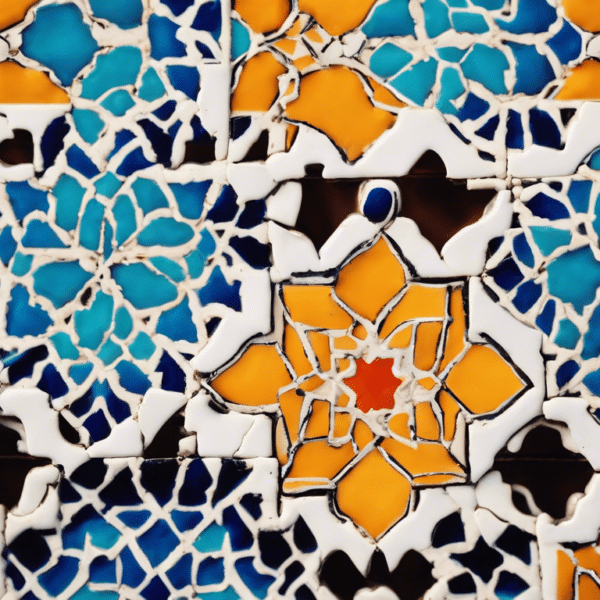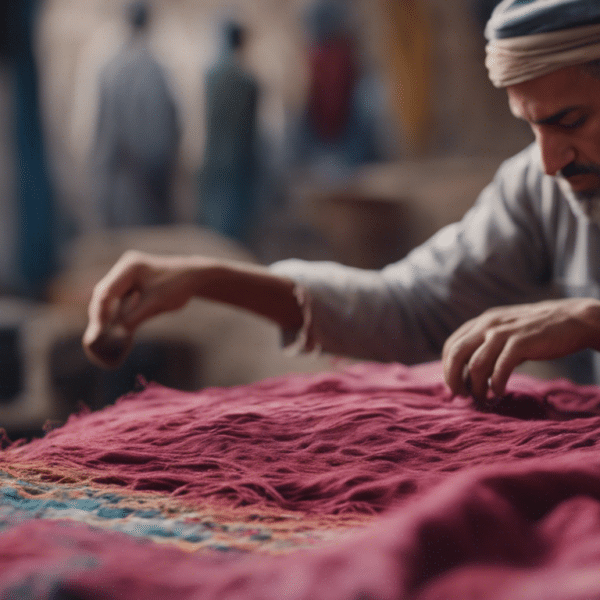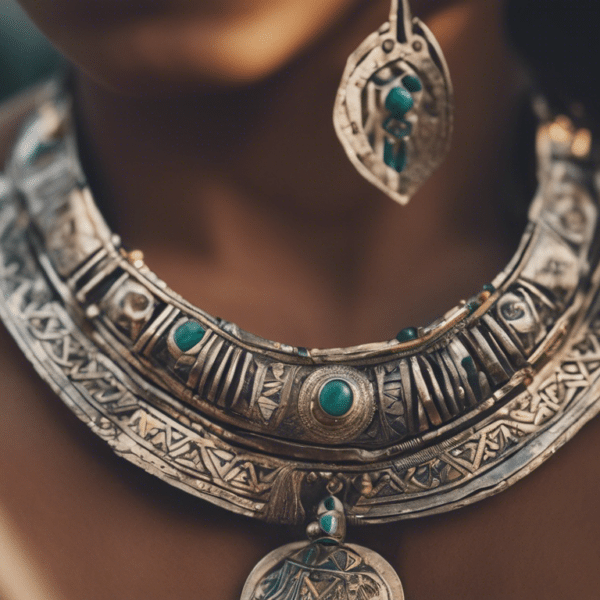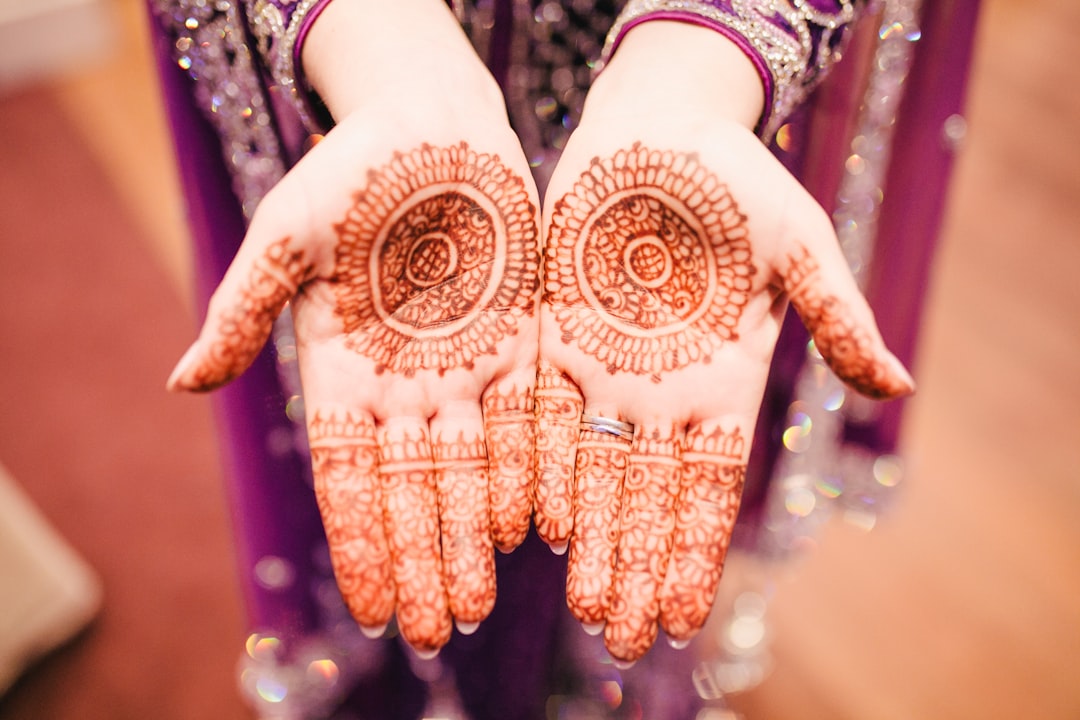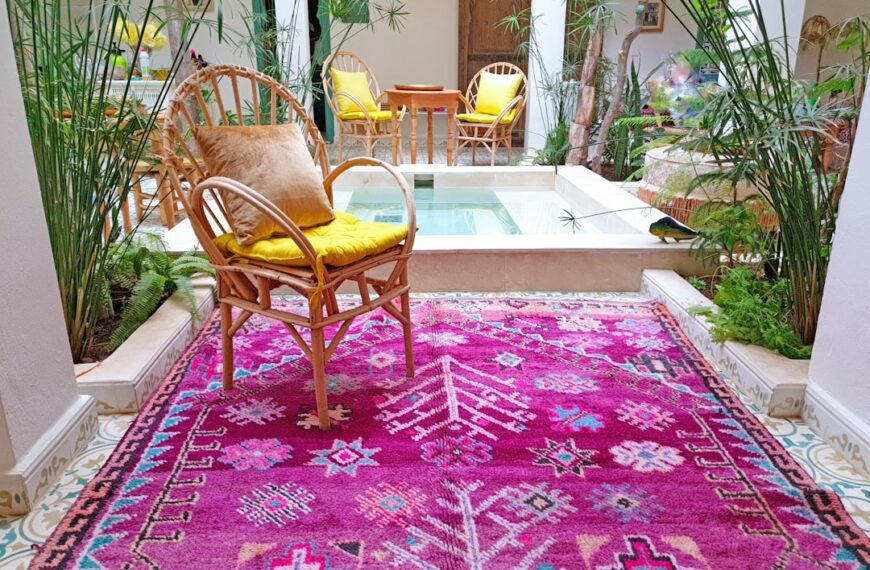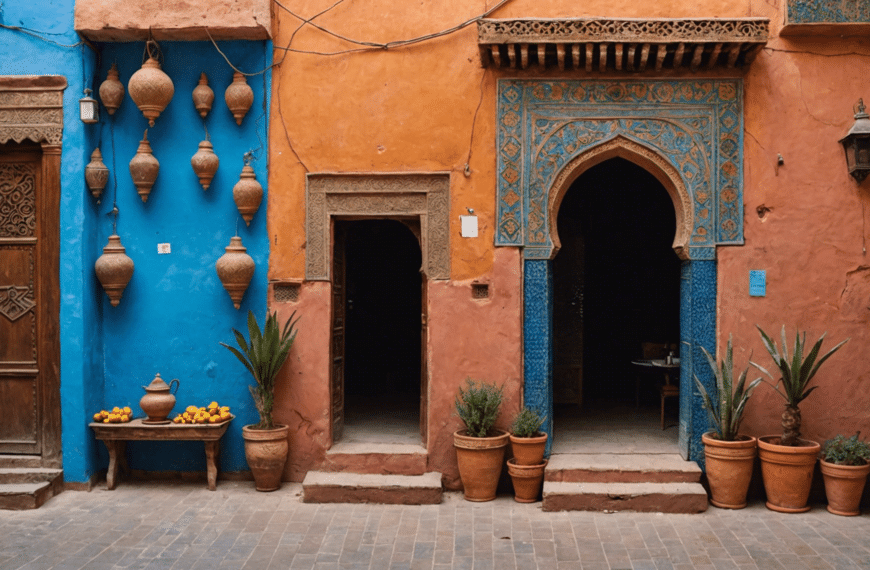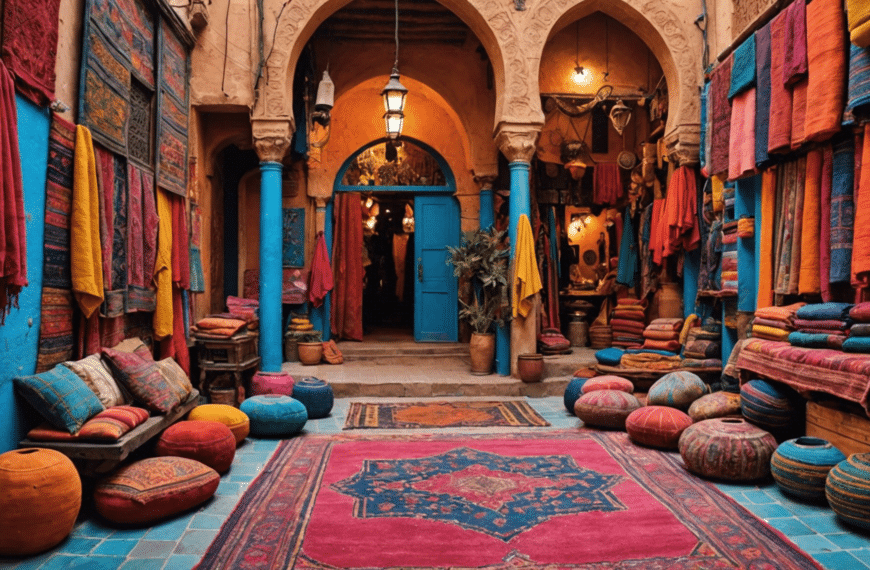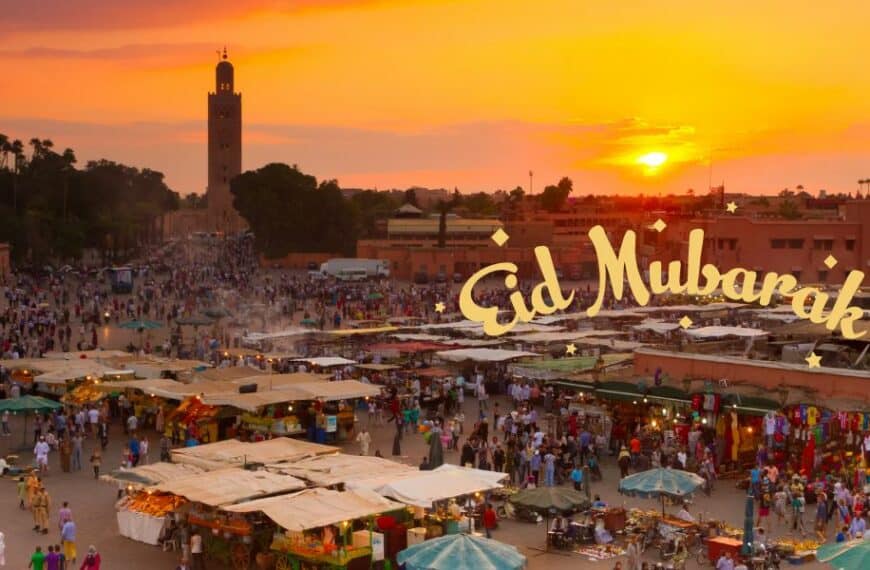The Colorful Tapestry of Markets: Sights and Sounds
Step into the vibrant world of Moroccan street markets and you’ll find yourself enveloped in a kaleidoscope of hues, a symphony of sounds that buzzes with the energy of ancient souks. Each market or ‘souk’ is a social center, a place where the threads of tradition, commerce, and community are woven tightly together, creating an intricate design that is both dizzying and delightful to explore.
The Visual Feast: A Riot of Colors and Textures
In the heart of a Moroccan market, the air vibrates with the vivid colors of piled spices – the ochres of cumin and turmeric, the deep reds of paprika and saffron. Artisans display their wares with pride, from carpets imbued with the stories of nomadic tribes to shimmering lanterns that cast intricate shadows. Fine jewelry, intricately wrought silver and beaded necklaces catch the eye and invite closer inspection. The markets are a living canvas, each stall adding a stroke of color, each vendor a painter contributing to the greater masterpiece.
The Symphony of Sounds: The Rhythm of the Streets
Close your eyes and listen to the Market’s melody. A rich tapestry of sound envelops you: the sizzle of street food as it hits the grill, the chant of shopkeepers advertising their best price, the thrumming beats of traditional Moroccan music. Conversations ebb and flow like a tide, in languages and dialects as varied as the goods on display. Bargains are struck with a dance of words, punctuated by the clink of coins changing hands. Each sound is a note in the market’s daily song, one that has been sung for centuries.
The Scents and Flavors: Spices and Delicacies
Wafting through the market, the air carries the aroma of fresh mint, used both in ceremonial tea and sold in bunches. The scent of spices and herbs mixed with the fresh aroma of citrus fruits fill the space. Food stalls beckon, offering steaming bowls of tagine, skewers of kebab seasoned to perfection, and the sweetness of honey-drenched pastries. Taste here is as vivid as sight, with each bite a marriage of flavor and tradition.
The Tangible Tradition: Textiles and Craftsmanship
The touch of handwoven textiles tells tales of age-old techniques passed down through generations. Feel the weight of a hand-crafted ceramic, cool and intricate to the touch. Explorers of these markets can find themselves holding the very heart of Moroccan artisanship, each piece a testament to skillful hands. Woodwork and metal goods shine with the attentive labor of their creators, while leather made with the tanneries’ traditional processes offers a connection to the past.
The People: The Essence of the Market’s Vitality
Ultimately, it is the people who bring the street markets to life. Shrewd merchants, skilled artisans, curious tourists, and local families—all converge in the market’s labyrinth. They are the living threads in the market’s fabric, each one a storyteller who adds their voice to the narrative of Moroccan culture. Engaging with them is not just about the exchange of goods, but also about the sharing of experiences and stories.
The Moroccan street market is more than a marketplace; it’s a sensory journey, a historical montage, a communal gathering that beckons all who visit to step into its embrace. It is here that one discovers the authentic rhythm of Moroccan life, a rhythm that continues to pulse strongly in the very heart of its cities and towns.
Scents and Flavors: A Melting Pot of Culinary Exploration
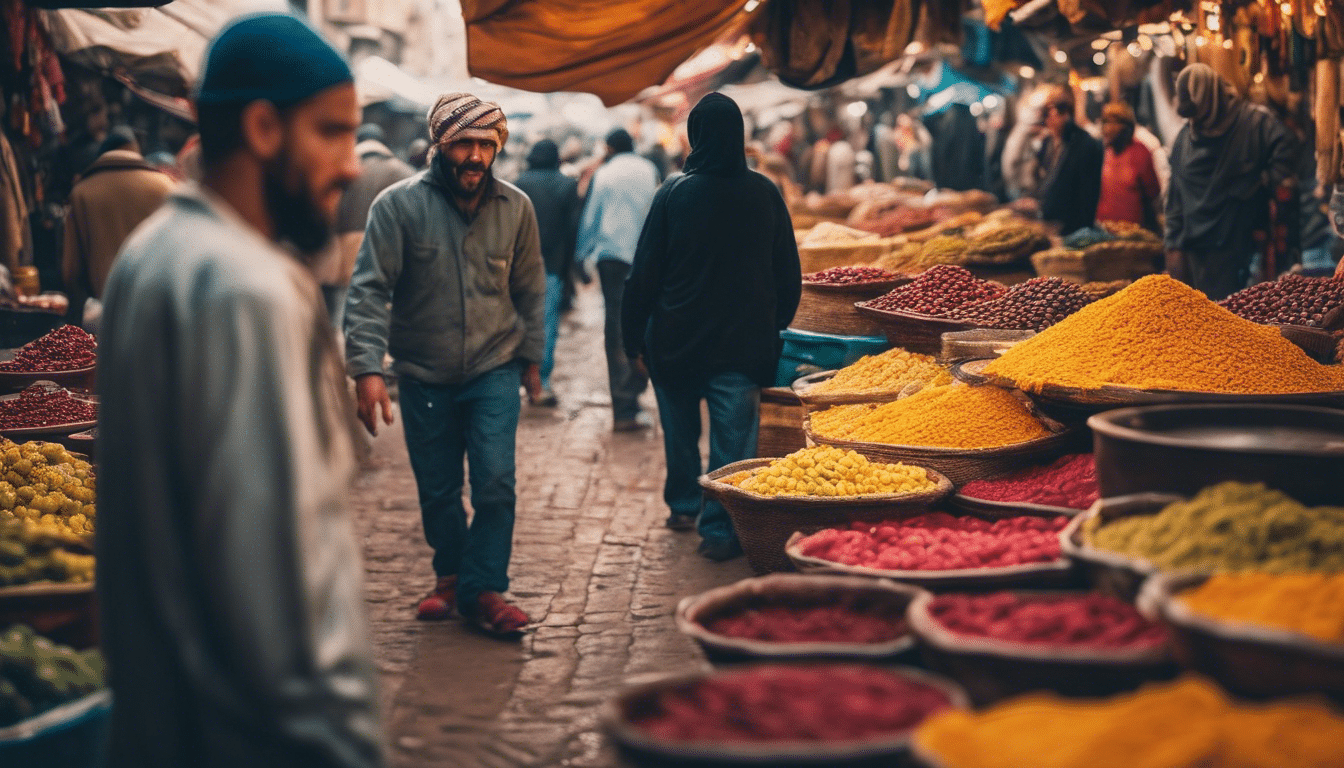
Moroccan Street Markets: A Symphony of Senses
Morocco’s street markets, or souks, represent a vibrant tapestry woven with the bustling energy of traders, the shimmer of colorful goods, and the aromatic embrace of countless spices. These markets aren’t just places of commerce; they’re theatres where every act plays out a story of tradition, resilience, and culinary wealth. Embark on an olfactory journey where the mingled scents of cumin, saffron, and smoking grills will guide you through narrow alleys brimming with activity.
Culinary Treasures Amidst the Stalls
Each turn within these labyrinthine souks unveils a constellation of flavors awaiting discovery. Here, the humble flatbreads emerge piping hot from clay ovens, while cauldrons simmer with harira soup, providing nourishing respite to those who meander past. Whether it’s the irresistible allure of tagines, each lovingly infused with local herbs, or the sweet, flaky layers of pastilla that draw visitors in, the market is a feast for the senses, a melting pot where cuisine tells the story of a nation’s soul.
Spices: The Heartbeat of Moroccan Flavor
The very essence of Moroccan cooking is found nestled among mountains of vibrant spices that tempt passersby with their pungent fragrances. Turmeric’s earthy warmth, the fiery spark of paprika, and the sweet, anise-like kiss of fennel seeds blend together in an aromatic mosaic. Here, spices are more than mere ingredients; they are historic carriers of the Moroccan culinary identity. Heartwarming blends like Ras el Hanout and the crimson threads of saffron bring not only color and heat to the table but also stories from the Silk Road and beyond.
Street Food: A Gourmet Odyssey for the Daring
Not for the faint of heart, the street markets offer savory snack adventures in the form of skewered kebabs and sizzling M’smen pancakes. There’s something viscerally authentic about indulging in such street-side fare, like joining an age-old Moroccan ritual that welcomes every visitor as a long-lost friend. Sample the zesty kick of olive varieties marinated with a signature blend of herbs and lemon, or challenge your palate with the exotic flavors of slow-roasted sheep head, a delicacy not to be missed.
The Sweet Conclusion: Desserts and Mint Tea
Amidst the sensory explosion of tastes and aromas, Moroccan markets also offer a saccharine retreat into the world of sweets and pastries. The honey-glazed allure of chebakia, sesame sprinkled coils redolent of orange blossom water, beckons the sweet-toothed traveler. Each bite harmoniously combines crunch, chew, and the subtle perfume of traditional spices. To end your culinary exploration on a refreshing note, surrender to the mint-scented steam of Moroccan mint tea, poured from high above in a dazzling display of local custom and hospitality.
In these streets where ancient customs meet the pulse of modern life, Moroccan markets are more than mere destinations; they are experiences that encompass a nation’s cultural richness and gastronomic heritage. They are the places where every sense is engaged, every palate is challenged, and every visitor leaves with a deeper understanding of this enchanting country’s culinary offerings.
Artisans and Crafts: A Glimpse into Centuries-Old Traditions
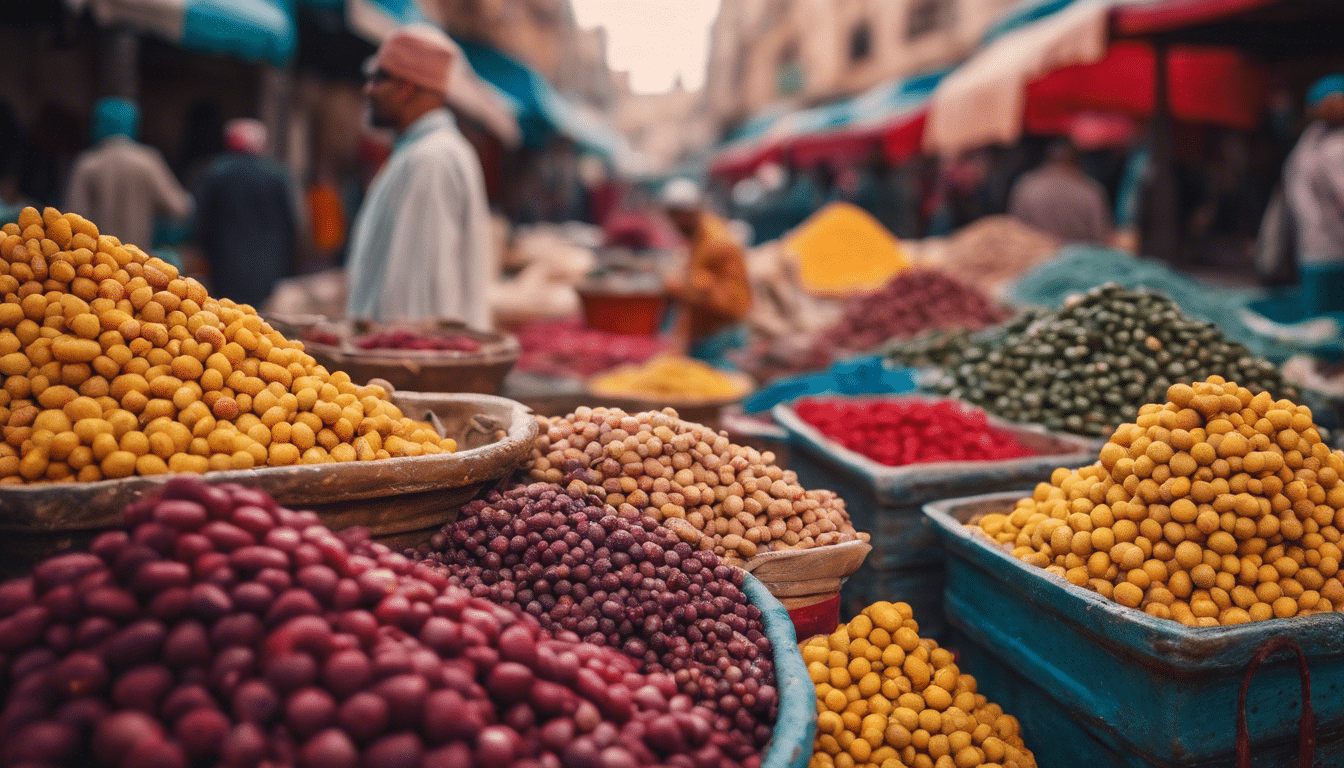
Embarking on a journey through Morocco’s street markets, known as ‘souks,’ is not just a shopping excursion—it’s plunging into a whirlpool of senses, a dive into a sea of traditions handed down through generations. As your footsteps echo on cobblestone paths, your gaze is met with an effusion of vivid colors, textures, and the melodious sounds of Moroccan life.
The Artisan’s Touch: Crafting Masterpieces with Tradition
Here, the artisan reigns as a guardian of ancestral know-how. Amidst the bustle of the market, dedicated craftsmen and craftswomen are found weaving magic into every medium they touch. Observe the skilled hands of a woodworker, as they carve delicate patterns with a precision passed down from their forefathers. The art of crafting is not just a means to earn; it is the embodiment of Morocco’s soul.
Whether it’s the meticulous art of zellige tile-making, the weaving of a Berber carpet, or the forging of intricate metal lanterns, each piece resonates with stories of a heritage rich and complex. In the heat of a potter’s kiln, centuries-old designs bloom to life, just as they have for epochs, connecting you with the past in every finished product.
From Loom to Souk: Textiles Drenched in History
Step under the shaded canopies and you’ll find stalls draped in fabrics that narrate tales through their motifs and dyes. The textiles of Morocco, often crafted on traditional looms, display a mastery of color and pattern. Djellabas, caftans, and scarves patterned in both geometric and abstract forms are more than mere clothing; they are wearable heritage.
Envelop yourself in the plush feel of a hand-woven blanket, a patchwork of warmth that took not just time, but a slice of someone’s life to create. With each thread, artisans weave their history, their community, and their environment into a tapestry of cultural identity.
Clay and Creativity: The Timeless Pottery and Ceramics
In the cool recesses of a market street, you might stumble upon a potter spinning clay into graceful forms. The pottery and ceramic traditions of Morocco are as varied as the land itself. Each region offers its unique blend of clay, glaze, and design. From the earth-toned pots of Tamegroute to the ornate plates of Fes, steeped in rich blues and greens, each piece is a tribute to the earth from which it was born.
It is a sensual experience—pick up a hand-painted bowl, and you can almost feel the pulse of the market, the heat of the sun, or the coolness of the oasis that inspired its creation. And behind each item lies a narrative, an artisan clinging steadfastly to the authenticity of their craft against the waves of modernity.
Savoring the Aromas: Spices, Olives, and Culinary Delights
Moving deeper into the sensory maze of the souk, one’s sense of smell is ignited by the aromatic call of culinary art. Heaps of spices in every hue cascade from their sacks, offering tastes that are a cornerstone of the Moroccan palate. These are not simply spices, they are the alchemy of the country’s cuisine, transformative in their power to convey the zest of Morocco on a plate.
Next to the spice vendors, there linger olive stalls, where orbs glisten like jewels, soaked in oil and brined to perfection. Sampling these, one savors the tang of tradition, as each olive seems to carry within it the essence of the sun-soaked land it hails from.
Crafting a Connection: The Cultural Impact of Moroccan Crafts
Visiting Morocco’s street markets offers more than a chance to purchase handcrafted goods; it’s an invitation to engage with a culture that thrives on the skills of its artisans. The exchange of goods is a dialogue, a shared language between visitor and creator. Each purchase is a vote for the preservation of these centuries-old traditions, a tangible piece of Morocco’s cultural tapestry.
In these markets, you’re not just a spectator; you become a part of the intricate fabric of Moroccan life. You leave not just with an object tucked into your bag, but with the knowledge that, with this simple act of appreciation, you help keep the story of these artisans alive, ensuring that their crafts—and through them, their culture—do not fade into the shadows of the past.
As you navigate the narrow alleys, remember that you walk among living museums, where the air is thick with the spirit of generations, and every crafted piece is a bridge connecting you to the Morocco of yesteryear. Here, in the bustling heart of the street markets, the pulse of Morocco beats strongest, rooted in tradition, yet ever evolving—much like the crafts that have made these souks famous across the globe.

